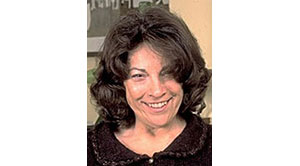Who could have imagined, even a few years ago, that holding a fingertip to your mobile phone screen would tell you your blood pressure? Yet, today, you can buy any one of a number of apps that does just that.
There’s only one problem. You’re most likely not getting an accurate blood pressure reading.
“Not ready for prime time,” is how Dr. Nilay Kumar described the technology to Reuters Health last month. Kumar is an attending physician at the Cambridge Health Alliance in Cambridge, Mass., and a Harvard Medical School instructor. He’s lead author on a study that analyzed the top 107 apps for “hypertension” and “high blood pressure”. Most – about 75 per cent – were found to offer useful tools for tracking medical data. But seven Android apps claimed users need only to press their fingers onto phone screens or cameras to get blood-pressure readings. Calling the technology potentially dangerous, he told Reuters it’s not ready for clinical use. The research showed these apps had been downloaded somewhere between 900,000 and 2.4 million times.
 |
|
Telehomecare photoshoot |
Contrast that with the work at OTN Telehomecare, where clinicians, instructional designers, writers, photographers and technology experts have spent many days over the last months – and a few nights – rigorously creating words and pictures that will support Telehomecare patients in taking their blood pressure. That process of publishing a new user’s guide – revised to reflect upgrades to the technology – is just one piece of the Telehomecare patient support system which includes technicians who install equipment in the patient’s home and nurses who monitor each patient’s results and provide health coaching for disease self-management.
The twin driving forces of consumer demand and threatened health system sustainability have opened up new territory in home and community-based health care. Consumers want to use technology: I can do my banking through technology, why can’t I do my health care that way, too? And, to survive, the system needs to move away from an acute care-driven model, devolving health care to the home and community with the patient as a full partner in their own care.
In response to these forces, evidence-based programs like Telehomecare have been developed. But there is also what Ed Brown has called the Wild West of virtual health care, potentially dangerous not just because of bad apps but because without evidence-based care, integration and platform compatibility, we will simply move from one fragmented system to another. Consider that less than three per cent of health care apps currently available have been developed by health care organizations or universities.
Taming this new territory must logically fall to organizations like OTN which, with its members and partners, can inspire and support innovation while taking the lead in making virtual health care not just convenient but safe and effective.






